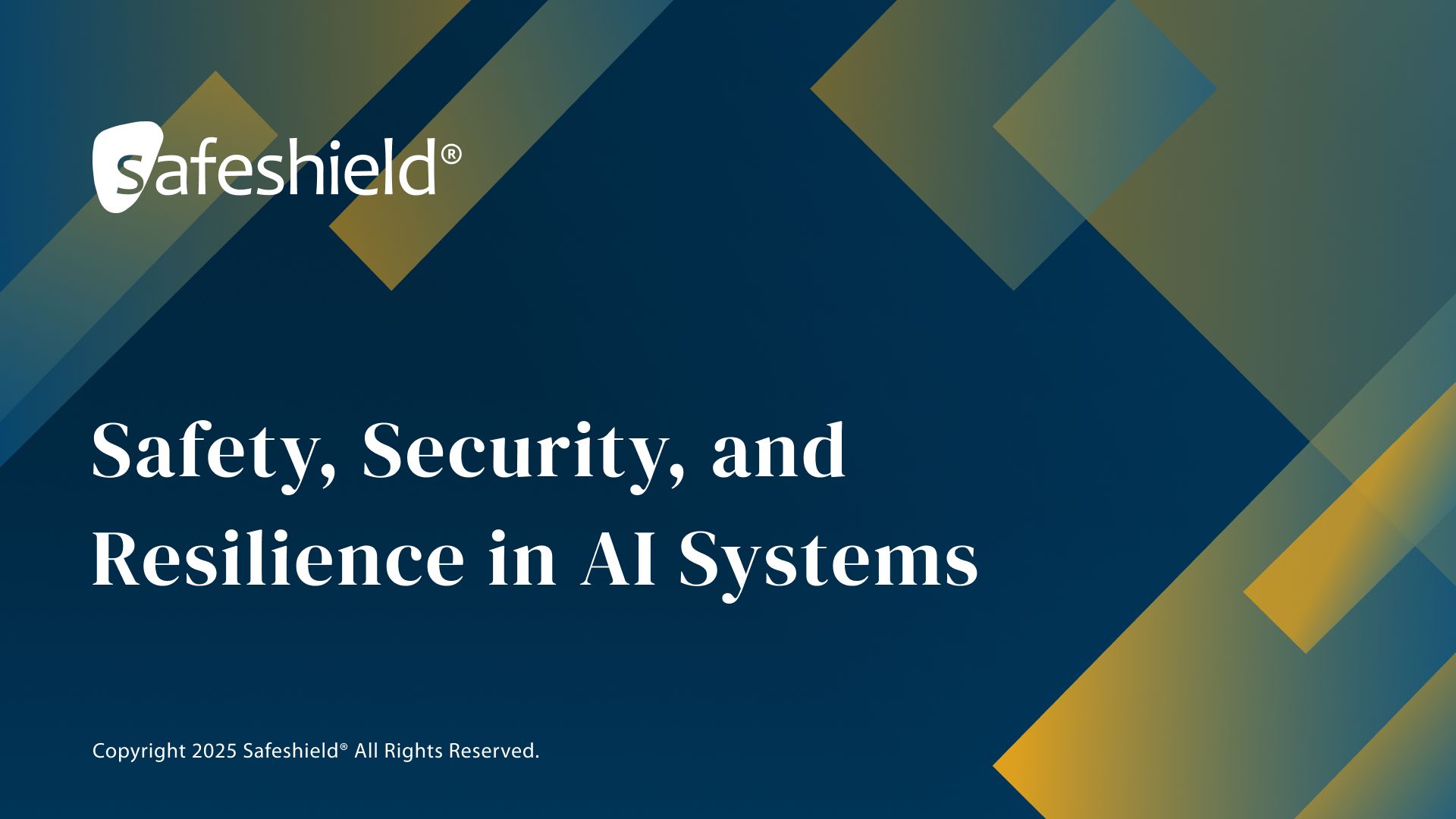The Complete Guide to Understanding DORA and Achieving Compliance
February 18, 2025
Understanding DORA
Anybody working in cybersecurity can probably attest to some of the scary statistics
circulating the internet, regarding cyber-crime. The world of finance is, unsurprisingly, one of the biggest targets for cyber criminals and as businesses rely more and more on online infrastructure it’s wise to be up to date on what sort of protection is available for organizations operating in this important industry. One of those such protections is the Digital Operational Resilience Act, or DORA.
Coming in to force in 2023, DORA is an EU regulation that’s all about strengthening the financial sector’s defenses against cyber threats and lays out a clear and standardized framework to help organizations manage IT risks effectively.
No matter where you are in your journey through the world of compliance, this guide will give you an understanding of why DORA is so important. We’ll break down the key principles, explain why they matter, and provide the knowledge to set your organization up for success.
What is DORA Compliance?
At its core, DORA is about creating a unified approach to cybersecurity and risk management in the financial sector. Instead of every organization following its own playbook, DORA establishes a consistent set of rules for how financial institutions should handle IT risks, secure sensitive data, and oversee third-party service providers.
Simply, DORA is about being proactive in the face of cyber threats, rather than reactive. It’s about being prepared.
An important thing to remember about DORA and its origin: As an EU regulation it might be easy to dismiss if your business is located outside of Europe, however it’s worth noting that, in order to do business anywhere inside Europe, your business must be compliant.
Who Must Comply with DORA?
DORA is a wide-reaching act that applies to an array of financial institutions and ICT service providers, including:
- Banks and credit institutions
- Insurance and reinsurance companies
- Investment firms and trading platforms
- Payment service providers
- Crypto-asset service providers
- ICT third-party service providers (e.g., cloud computing and data analytics firms)
DORA works to secure financial entities by governing more than just the entities themselves. By including third-party providers, DORA also ensures the vendors that supply our financial institutions with critical software and technology are held to the same rigorous cybersecurity standards, further reducing the risk of a security breach.
How Do I Comply With DORA?
Complying with DORA can feel like a daunting task, but understanding its key components and breaking them down into actionable steps makes the process much more manageable. Let’s dive into the critical areas DORA emphasizes and explore how organizations can implement these requirements effectively to build a resilient digital foundation.
ICT Risk Management
At the heart of DORA lies the need for robust Information and Communication Technology (ICT) risk management. Why? Because IT risks, left unchecked, can snowball into costly disasters. DORA mandates that financial institutions establish a strong framework for identifying, assessing, and mitigating risks before they impact critical operations.
To comply with this requirement, organizations need to start by crafting clear security policies and governance structures. These policies should outline how risks are assessed, who is responsible for managing them, and the specific steps taken to reduce their likelihood or impact. Risk management shouldn’t be an afterthought; it needs to be integrated into daily operations.
One key element of compliance is conducting regular risk assessments. This involves actively seeking out vulnerabilities within your systems—whether it’s a poorly configured firewall, outdated software, or inadequate employee training—and addressing them proactively. These assessments should be scheduled periodically but also conducted after any major system changes like deploying new technologies or onboarding a third-party vendor.
It’s important to involve leadership in these procedures too. Engaging executive teams in IT risk strategies ensures that cybersecurity is treated as a priority, not just a technical concern. When leadership understands the risks and actively supports mitigation efforts, it fosters a culture of security from the top down, increasing buy-in across the organization.
Incident Reporting and Response
No matter how secure an organization is, an incident is still not out of the question. When this happens, time is of the essence. DORA underscores the importance of being prepared for these situations with comprehensive incident reporting and response plans. But what does that preparation look like in practice?
First and foremost, organizations need robust threat monitoring systems that provide real-time visibility into their IT environment. These systems help teams detect unusual activity early, allowing them to act swiftly before minor issues escalate into major breaches. Things like monitoring network traffic for anomalies, or implementing endpoint detection tools, can give teams an edge in identifying a potential threat.
Equally important is the ability to report incidents quickly and accurately to regulators. DORA sets strict timelines for reporting major security incidents, so organizations must establish clear protocols for gathering incident data, assessing its severity, and communicating it to the appropriate authorities. This means training teams on what qualifies as a "major" incident and having predefined templates for submitting reports.
Beyond immediate response, DORA encourages financial institutions to develop detailed recovery plans. These plans should outline specific steps for containing a breach, restoring affected systems, and minimizing operational downtime. Recovery is as much about learning as it is about restoring business operations. Post-incident reviews can uncover gaps in defenses and provide valuable lessons for future improvements.
Third-Party Risk Management
Outsourcing important infrastructure to third-party vendors is commonplace in the financial sector. While this can boost efficiency, it also introduces risks. DORA makes it clear that organizations cannot transfer responsibility for cybersecurity to vendors and ensuring that third-party providers meet the same security standards is non-negotiable.
Vendors should be thoroughly vetted before entering into any agreements. This process should include a review of their security certifications, requesting evidence of past performance, and assessing their risk management policies. A vendor with strong security practices today might not maintain them tomorrow, which is why regular audits and risk assessments are crucial.
Organizations should also establish clear contractual obligations regarding cybersecurity responsibilities. Contracts should specify how data is protected, who is liable in the event of a breach, and what measures will be taken to ensure continuity during disruptions. For example, a service-level agreement (SLA) might require the vendor to perform regular vulnerability scans and share the results.
Finally, the importance of a backup plan. If a vendor experiences downtime or fails to meet their obligations, organizations must have contingency measures in place to keep operations running smoothly. This could mean maintaining secondary providers, diversifying critical services, or developing in-house capabilities for essential functions.
Resilience Testing & Continuous Monitoring
No cybersecurity framework is complete without testing. DORA states the need for organizations to test their defenses regularly to ensure they can withstand cyberattacks and recover quickly from any potential disruptions or setbacks.
Penetration testing
is one of the most effective ways to uncover vulnerabilities in your systems. By simulating real-world attacks, penetration tests help you identify weak points and determine whether your defenses are up to the task. These tests should be performed by skilled professionals who can provide actionable recommendations for strengthening your systems.
In addition to testing, organizations must adopt continuous monitoring practices. This involves using advanced tools to keep an eye on system performance and security around the clock. Continuous monitoring enables teams to detect and respond to threats in real time, reducing the window of opportunity for attackers.
DORA also encourages financial institutions to conduct cyber resilience drills. These drills are designed to test incident response capabilities by simulating realistic attack scenarios. These can include things like mock ransomware attacks where teams must isolate the affected systems, restore data from backups, and communicate with stakeholders. These practice scenarios help organizations identify gaps in their response plans and build confidence in their ability to handle real incidents.
Information Sharing and Collaboration
Ensuring safety against cyber threats can’t be done alone. It requires cooperation. and teamwork. DORA promotes a culture of information sharing and collaboration within the financial sector to strengthen collective defenses against threats.
Organizations can comply with this requirement by sharing knowledge about emerging threats and vulnerabilities. If a team discovers a new phishing tactic targeting financial institutions, sharing this information with their industry peers can help them prepare and respond. Participation in information-sharing networks or forums, such as the Financial Services Information Sharing and Analysis Center (FS-ISAC), can facilitate these exchanges.
Being open about cyber incidents—what happened, how it was resolved, and what lessons were learned—can foster trust within the industry and encourage others to adopt best practices. While there might be a desire to protect reputations by keeping incidents under wraps, sharing experiences can ultimately lead to a stronger collective security posture.
Finally, DORA encourages organizations to create an internal culture that makes cybersecurity a shared responsibility. This means educating employees across all levels about their role in protecting the organization’s assets, from recognizing phishing emails, to following access control policies or reporting suspicious activity. When everyone plays their part, the entire organization becomes more resilient.
We understand that adapting your business to meet the specific requirements of DORA can be a challenge. One that will likely require dedicated cybersecurity professionals to ensure success.
Safeshield specializes in training tomorrow’s leaders and guaranteeing individuals the skills to succeed in these roles. Our training catalogue is available here.
Best Practices for DORA Compliance
Implementing DORA effectively goes beyond meeting regulatory requirements—it's about embedding resilience into your organization’s culture and processes. We've put together a brief outline of the best practices to help your organization achieve compliance:
Conduct Regular Security Assessments
Stay ahead of threats by frequently evaluating your infrastructure, involving stakeholders, and adjusting risk strategies based on the latest insights.
Strengthen Incident Response Teams
Train teams through real-world simulations, establish clear reporting protocols, and ensure readiness to minimize downtime during breaches.
Leverage Technology for Compliance
Use AI-driven tools for real-time threat monitoring, automate compliance reporting, and employ machine learning to proactively mitigate risks.
Enhance Third-Party Security Oversight
Vet vendors thoroughly, enforce strict security policies, and develop contingency plans to maintain continuity during vendor-related issues.
Prioritize Continuous Testing and Monitoring
Conduct routine penetration tests, implement 24/7 real-time monitoring, and hold regular drills to refine your defenses and stay vigilant.
To find out more about DORA best practices and the best ways to achieve compliance, check out our in-depth blog.
Why DORA Compliance Matters
Okay, so why does DORA compliance even matter? If my own security framework is working, why should I have to change it?
Beyond just ticking regulatory boxes are there any meaningful benefits for my organization?
The answer is obviously, yes. While your current security posture may be strong and protect you against threats, you can’t guarantee this will always be the case. It only takes one unsecured third-party provider to open your organization to a myriad of dangers. DORA aims to help financial institutions, and the vendors they work with, build a security ecosystem that’s more resilient, stronger and more secure than simply working alone.
DORA provides the financial sector with the piece of mind of having a united, proactive defense against threats. That means fewer breaches, increased confidence from customers and a clear, and regulated approach to security. A secure future for everyone.
Final Thoughts
DORA marks a huge shift in the way financial institutions approach cybersecurity. Instead of reacting to threats, organizations must take a proactive stance on risk management, incident response, and third-party security.
DORA compliance is about building a foundation of resilience that goes beyond protecting a single organization but instead aims to secure the broader financial ecosystem. In a world where cyber threats are becoming more advanced every day, DORA offers a framework to address these challenges with confidence and clarity.
By adopting proactive risk management, strengthening incident response, and fostering collaboration across teams and partners, your organization can turn compliance into an opportunity to innovate and grow. More than just defense; DORA is about preparing for the future and ensuring that your operations remain secure, no matter what comes your way.
As you take the next steps, remember that knowledge and preparation are your most powerful tools. Invest in understanding the principles of resilience and seek out ways to build a culture where security and compliance go hand in hand. With the right mindset, DORA compliance is a steppingstone to greater trust, stability, and success in our evermore interconnected world.
Share this article





